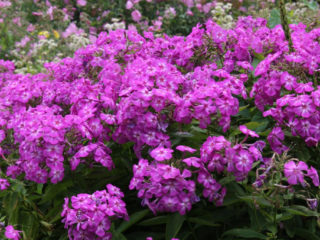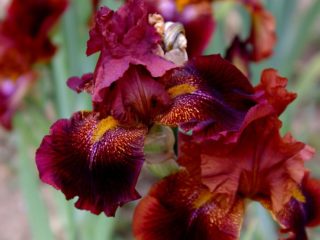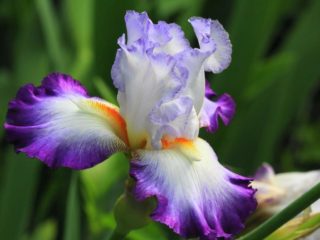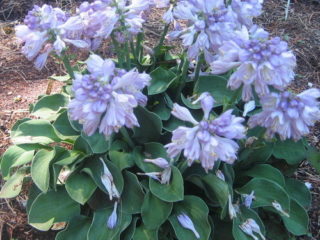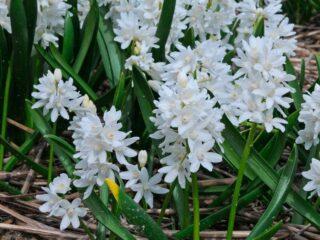Content
Among the ornamental crops that decorate garden plots and urban areas, the African Queen lily occupies a special place. The rich, bright orange color of the buds of this profusely flowering plant, combined with its unpretentiousness and tolerance to temperature fluctuations, allows it to be grown in all regions of the country.

The African Queen lily continues to bloom throughout the second half of summer.
History of appearance
Lily African Queen (Lilium African Queen) is a tubular hybrid of Asian plant species. The variety was bred in 1983 and during this time has gained popularity among flower lovers, as well as landscape designers around the world.
Description of the African Queen trumpet lily with photo
The African Queen lily variety is a medium-sized plant. The height of the central erect stem is approximately 90-100 cm. The leaf blades are rich green in color and have a classic elongated shape. On the racemose inflorescences of the lily, 3-5 buds are formed (there are a total of up to 20 on the stem), each with a diameter of 15-17 cm.

The smooth petals are distinguished by their color in a soft orange hue, the pistils and stamens are collected in a bunch
Features of flowering
The African Queen variety belongs to the category of crops that produce abundant color. The period of bud formation begins in early July and ends closer to September. During flowering, the plant emits a pronounced aroma, which can cause rejection in people sensitive to odors.
Advantages and disadvantages
The remarkable decorative qualities of the African Queen lily are the main advantage of the flowering culture. Florists value the variety for its large bud size and pleasant shade of petals.

Trumpet lilies tolerate cold winters well without shelter, provided there is sufficient snowfall.
Pros:
- long and abundant flowering;
- dense structure of the petals, due to which the buds are not subject to deformation;
- unpretentiousness to growing conditions and undemanding care;
- high level of immunity to infections and pests;
- maintaining the freshness of cut flowers for a long time (up to two weeks).
Minuses:
- the need to use vertical supports to ensure the integrity of the bush;
- intolerance to the aroma of flowers by people sensitive to odors.
Planting the African Queen lily
Compliance with planting technique is of decisive importance when breeding the African Queen lily. The following conditions are considered favorable for agricultural technology:
- The growing area should be well lit.
- It is advisable to choose an area protected from the winds, with well-drained soil.
- Sandy, sandy loam, loamy soils with a neutral acidity level are suitable for cultivation.
The area where it is planned to plant lilies is dug up to a depth of 35 cm in the fall. In order to improve the structure, sand, compost and a spoonful of superphosphate are added to the soil. It is better to carry out the agrotechnical procedure two weeks before planting the plant. The fertilized soil is dug up again and watered.
If you manage to plant African Queen bulbs in the substrate immediately after purchase, then it is advisable to do so. If this is not possible, the lily heads are placed in a perforated bag filled with peat, sawdust or moss. Keep the bulbs in the refrigerator or basement.
Planting can be done both in autumn and spring, but agricultural technicians are convinced that it is better to do this in September. Then the bulbs will have time to take root before frost and will bloom faster with the arrival of warmer weather. Before the onset of cold weather, the planted planting material must be covered.
The optimal time for spring planting is May. At this time, the soil is sufficiently warmed up and, as a rule, there is no threat of frost. In the southern regions, planting is carried out earlier - at the end of April.
Caring for the African Queen lily
The African Queen lily requires moderate but regular watering, and in the first summer the flower needs more frequent irrigation. For abundant flowering, plants are fed cyclically.
The algorithm for applying fertilizers is as follows:
- The first feeding is organized after the snow melts. Nitrogen-containing compounds are used as fertilizers.
- During the period of bud formation, African Queen is watered once with water with saltpeter dissolved in it.
- Before flowering, liquid phosphorus fertilizers are applied.
- At the end of August, the bushes are fed with a phosphorus-potassium mixture.
The set of agrotechnical measures for caring for the African Queen lily includes loosening the tree trunk area after fertilizing and watering. The procedure is necessary to ensure unhindered access of oxygen and nutrients to the roots.
At the end of flowering, the plant is pruned. In late autumn, plantings are covered with a layer of insulation, which can be used as:
- conifer paws;
- sawdust;
- compost.
Plants protected by natural shelter survive the winter painlessly. With the onset of spring, new shoots are actively forming on the bushes. Features of cultivating the African Queen lily are presented in the video:
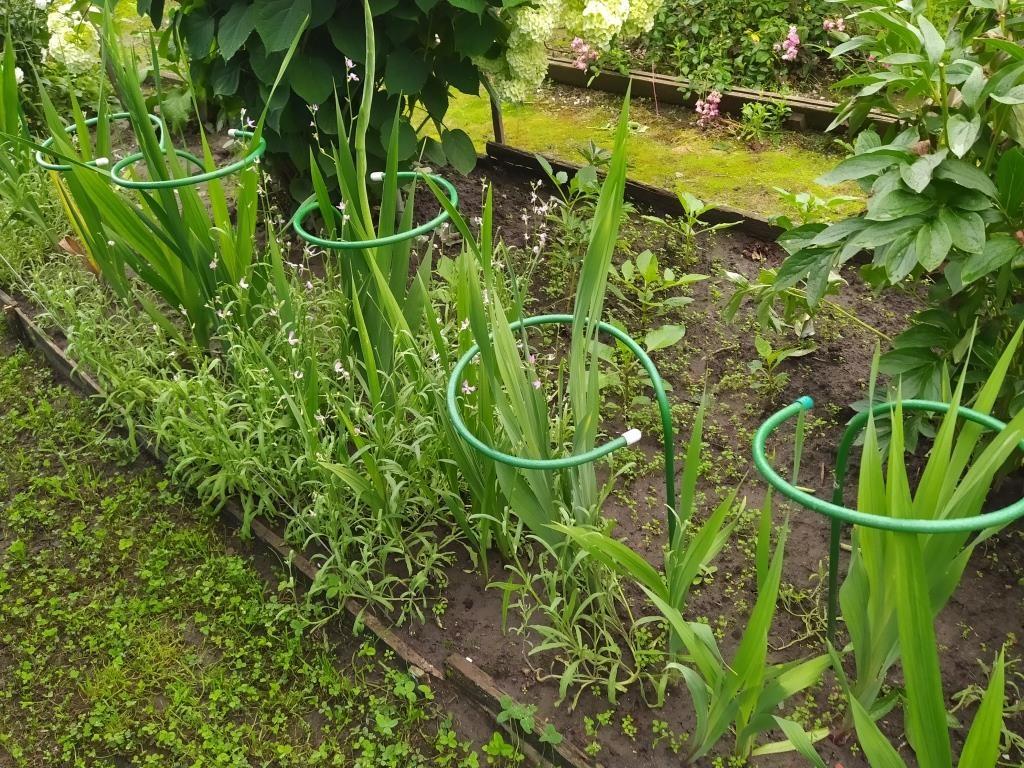
When growing African Queen lilies, it is convenient to use industrial supports
Reproduction
After four years, African Queen lilies should be transplanted to a new location. During the procedure, the plant can be divided. To do this, the stem is cut off in the fall, leaving stumps 15 cm high from the ground. The lily nest is divided, the bulb is sent to a new place, and the babies are planted for rearing.
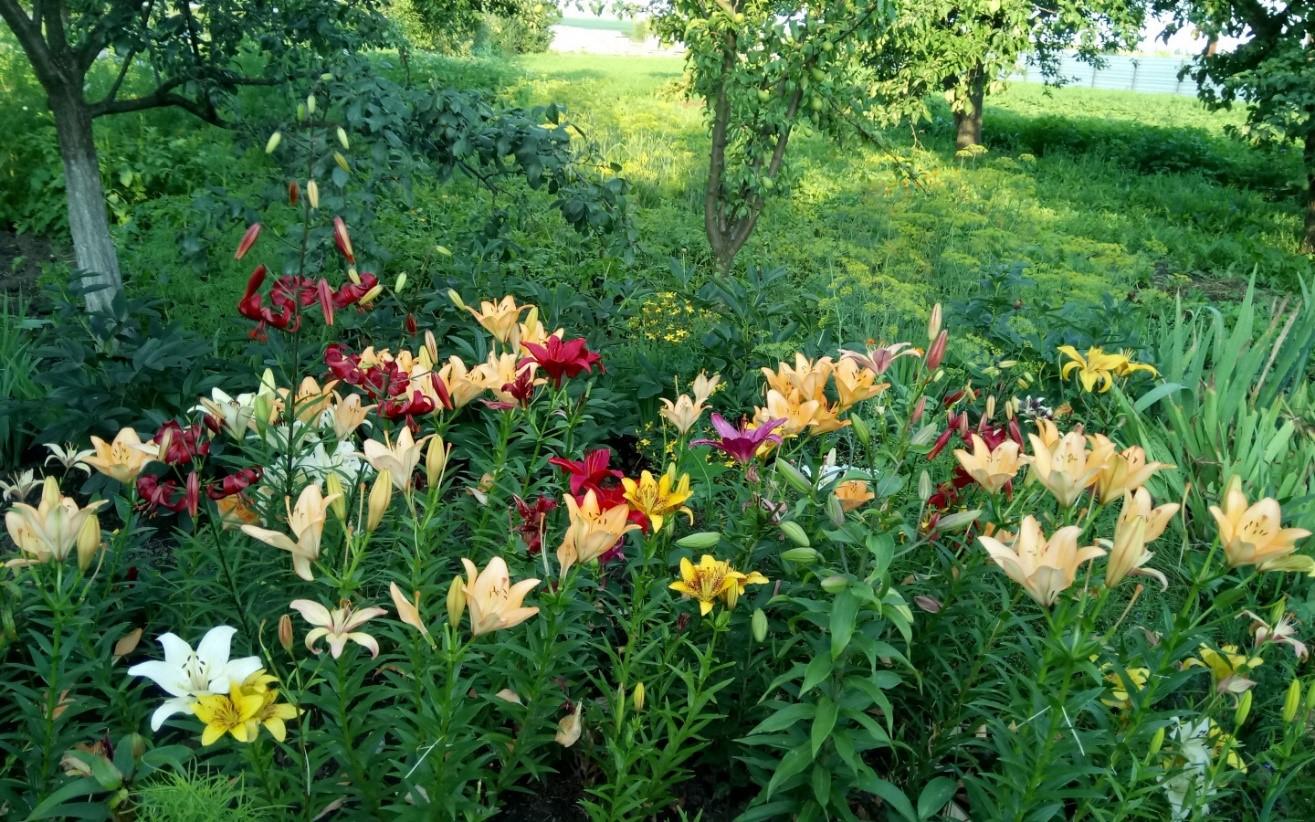
African Queen forms a harmonious floral ensemble with other bulbous plants
Conclusion
Lily African Queen is one of the most beautiful representatives of the monocotyledonous plant family. Spectacular, bright buds on strong shoots fit perfectly into any landscape formation.Cut flowers are suitable for making luxurious floral arrangements.

